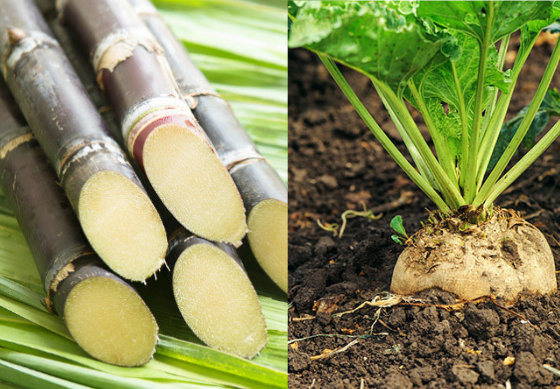The sourcing of beet sugar vs cane sugar affects farming impact in the sugar industry.
The sourcing of beet sugar vs cane sugar affects farming impact in the sugar industry.
Blog Article
Discover the Uses and Benefits of Beet Sugar Vs Cane Sugar in Your Daily Diet Regimen
Exploring the unique high qualities of beet and cane sugar reveals greater than just their sweetening capacities; it highlights their special effect on wellness and cooking arts. Beet sugar, recognized for its subtle taste, is often preferred in fragile desserts, whereas cane sugar, with its hint of molasses, includes splendor to durable recipes. Each kind holds its very own nutritional profile and glycemic effects, inviting a deeper understanding of their functions in a well balanced diet regimen and sustainable usage techniques.
Beginning and Manufacturing Procedures of Beet and Cane Sugar

The unique climates and dirt kinds required for expanding sugar beetroots and sugarcane add to distinctions in their growing methods and geographic distribution, affecting the economics and sustainability of their production. beet sugar vs cane sugar.
Nutritional Comparison Between Beet Sugar and Cane Sugar
Regardless of originating from various plants, beet sugar and cane sugar are nutritionally extremely similar, both largely containing sucrose. Each provides regarding 4 calories per gram, translating to about 16 calories per teaspoon. Structurally, both sugars are made up of around 99.95% sucrose, with minimal quantities of other materials like wetness and trace minerals, which do not significantly modify their nutritional accounts.

Ultimately, when picking between beet sugar and cane sugar based on nutritional content alone, both deal similar benefits and disadvantages as they are basically types of the same particle-- sucrose, providing fast energy without other nutrients.
Influence On Wellness: Glycemic Index and Caloric Content
Exploring better into the results of beet sugar and cane sugar on health, it is vital to consider their glycemic index and caloric material. Both sugars are identified as sucrose, which includes sugar and fructose. This composition leads them to have a comparable influence on blood my site sugar degrees. The glycemic index (GI) of both beet and cane sugar is around 65, classifying them as high-GI foods, useful source which can create fast spikes in blood glucose levels. This is an important aspect for individuals taking care of diabetic issues or those trying to maintain their power degrees throughout the day.
Each sort of sugar consists of about 4 calories per gram, making their caloric material matching. For those keeping an eye on calorie intake, especially when managing weight or metabolic health problems, understanding this equivalence is crucial (beet sugar vs cane sugar). Nevertheless, excessive usage of any type of high-calorie, high-GI food can add to health and wellness issues such as excessive weight, heart condition, and insulin resistance.
Environmental and Economic Considerations of Sugar Manufacturing
Beyond health and wellness influences, the production of beet and cane sugar additionally increases substantial environmental and financial concerns. Sugar beet growing tends to need cooler environments and has a lower geographical impact compared to sugar cane, which flourishes in exotic regions. Nevertheless, both plants are intensive in regards to water use and land occupation, potentially leading to deforestation and water deficiency. Economically, the worldwide sugar market is very volatile, influenced by adjustments in international profession plans and subsidies. Numerous nations incentivize sugar manufacturing via financial support, skewing market value and influencing small farmers negatively. navigate here
Furthermore, the use of pesticides and fertilizers in both beet and cane sugar growing can cause soil deterioration and contamination, additional influencing biodiversity and neighborhood water bodies (beet sugar vs cane sugar). The option in between growing sugar beet or cane often pivots on neighborhood ecological problems and financial aspects, making the sustainability of sugar production a complicated issue
Culinary Applications and Flavor Differences
While the ecological and financial aspects of sugar production are indeed considerable, the option between beet and cane sugar likewise influences culinary applications and flavor profiles. Beet sugar, originated from the sugar beet plant, is understood for its incredibly neutral preference. This makes it a versatile component in baking, where it does not modify the taste of various other elements. It dissolves swiftly and is excellent for usage in cakes, cookies, and breads.
Walking cane sugar, drawn out from sugarcane, often preserves molasses traces, which pass on a distinct richness and deepness. This minor molasses flavor improves the intricacy of baked products, sauces, and sauces. It is particularly preferred in items where a sugar undertone is wanted, such as in brownies or gingerbread. The small variant in moisture content in between beet and cane sugar can influence the texture and consistency of recipes, making cane sugar a preferred selection for particular dishes that profit from its unique residential properties.

Final Thought
Finally, both beet and cane sugar have distinct beginnings and manufacturing procedures, providing similar dietary accounts with minor distinctions in salt material and taste. While their influence on wellness, specifically pertaining to glycemic index and calories, is similar, the option between them often steams down to ecological, economic elements, and specific cooking demands. Recognizing these elements can guide customers in making informed choices that line up with their health and wellness goals and flavor choices.
Report this page